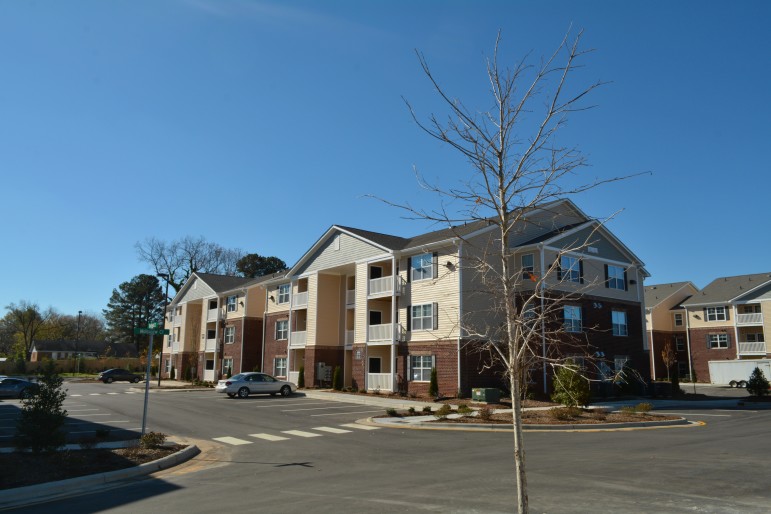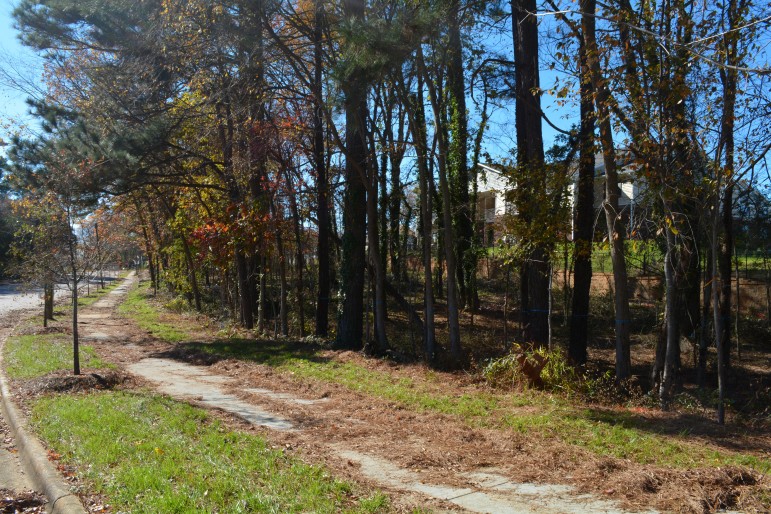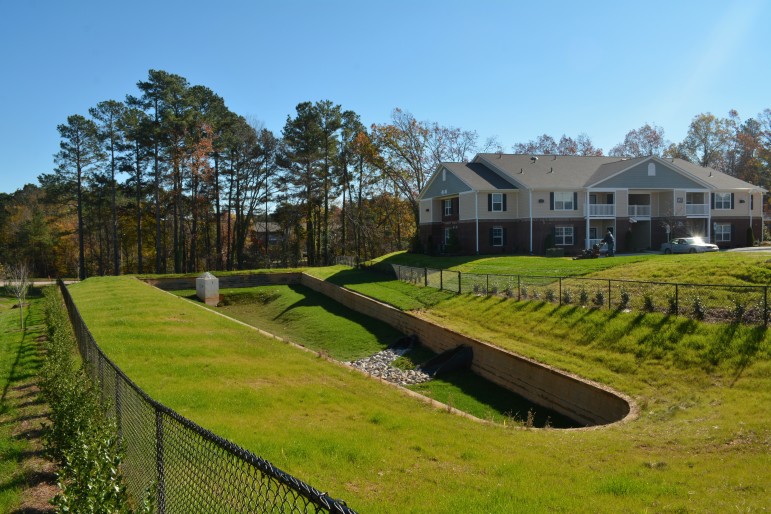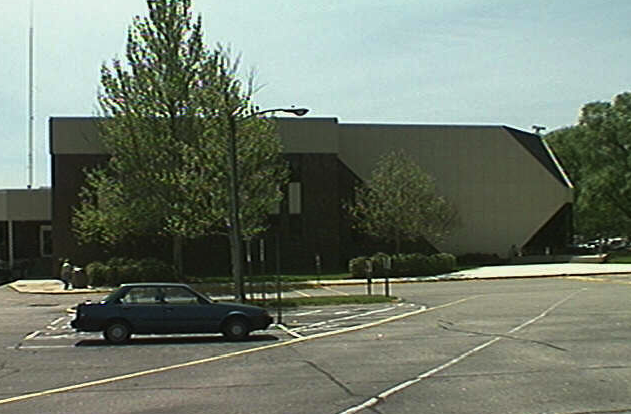Residents of Shamrock Meadows and other surrounding neighborhoods along Green Road in north Raleigh are concerned that a new apartment complex may be flooding their sidewalks and overburdening their lakes.

James Borden / Raleigh Public Record
The new Calvary Trace Apartments
The newly-built Calvary Trace Apartments, neighbors claim, may be overburdening the existing stormwater management system due to a malfunctioning retention basin. As the site of the apartments was formerly nothing but trees, the additional runoff created by the increase in impervious surface area was supposed to be offset by the retention basin.
In the November meeting of the Atlantic Citizens Advisory Council, several residents spoke out about the flooding they had witnessed amid the recent storms.
“The retention pond is always dry,” noted Carol Sims, who lives a few blocks south of the new development.
“There’s been a lot of hauling of dirt and materials, and the trucks left a lot of mud and dirt on the streets,” Sims said.
“So they had the sweeper truck come out, and then the water truck; they just blasted the dirt into the lake.”
Sims and others noted that during all recent rainfall events, the sidewalks along Calvary and Limerick Drive that border the apartments were completely flooded.

James Borden / Raleigh Public Record
Neighbors have said this sidewalk becomes flooded whenever it rains
The additional runoff could overburden existing stormwater systems, and several residents expressed concern over the recent Northshore Lake Dam project. Once all work on it is complete, the property owners will be responsible for its upkeep. If runoff from Calvary Trace flows into the lake, it could create problems down the road for those property owners.
It’s worth noting that this isn’t the first time the project has faced neighborhood pushback: it was submitted, reviewed, and approved under the prior Part 10 code. It received administrative review because it did not exceed the density threshold for Planning Commission review under the Part 10 code, meaning that the project only required an administrative site plan review, and site plans were not presented to the Planning Commission or City Council. This meant local residents had no real input in the project’s development.
Ann Hanson from Excel Property Management, the local firm which will be overseeing the property once construction is finalized, said at this point any issues such as stormwater management were still in the hands of the city and the developer.
“The pond was built with the city engineer’s approval, which allowed them to go forward with it, but whether or not it’s operating, we don’t have a comment at this point because the property hasn’t been turned over to us, it’s between the city and the developer.”

James Borden / Raleigh Public Record
Neighbors say this retention basin remains dry no matter the amount of rainfall
Calls to and messages left for the City of Raleigh’s Development Services Center, which approved the site plans for this project, Chandler Engineering, which designed the site plans and PIRHL Developers, which owns and developed the property went unreturned.
Development Plans Scrapped
In October’s Atlantic CAC meeting, Mack Paul from the Morningstar Law Group was on hand to present a rezoning case on behalf of ITB Holdings, which was seeking to rezone the Alcatel property next to the Holly Park Shopping Center.
Due to the remapping portion of the Unified Development Ordinance, the property was going to be automatically rezoned to community mixed-use, which would have limited the number of stories for any future development to three. The current zoning allows for seven, and the property owners wanted to rezone it to commercial mixed-use, which would preserve the seven-story height cap.

Wake County
This building once stood on the property which was up for rezoning. It was torn down in 2011.
Following City Council’s approval earlier this month of the citywide UDO remapping, the developers chose to withdraw their application. Although a representative from Morningstar Law Group was scheduled to speak at November’s Atlantic CAC meeting, they instead sent word of the withdraw. It is unknown at this time what may become of the property, although it is still possible it could be rezoned to once again allow for seven stories.
Correction: This article originally stated that the project did not require Planning Commission approval due to the Unified Development Ordinance. It did not require approval due to the Part 10 Code and the fact that it did not exceed the density threshold.
